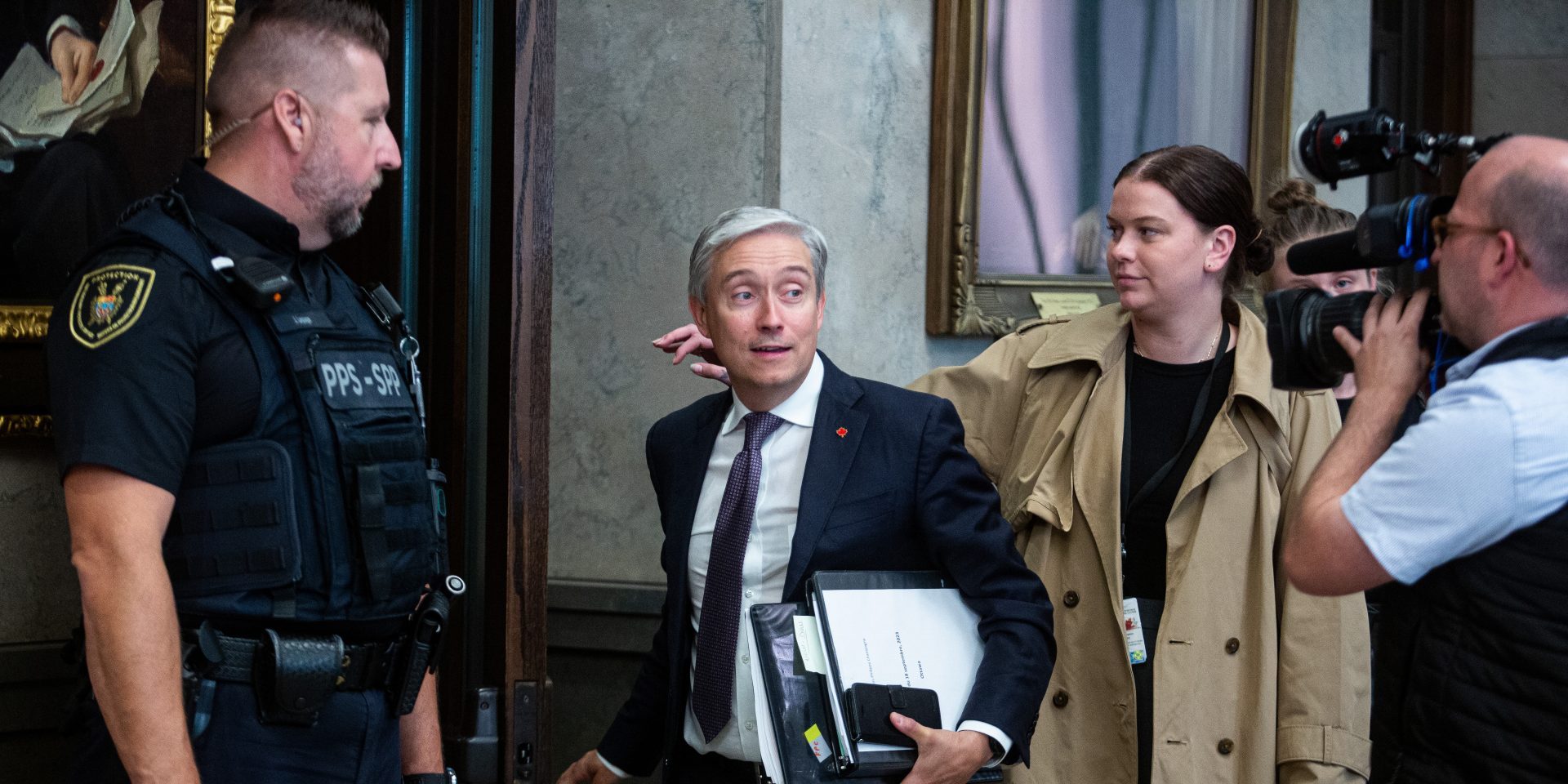Canada Revenue Agency to slash full-time jobs tied to benefits programs, ‘sunsetting’ tax policies

The Canada Revenue Agency already faced the brunt of the first public service job cuts in a decade earlier this year, but the agency is planning a further 10-per-cent reduction in full-time staff—or 5,175 full-time jobs—over the next three years.
The CRA’s latest departmental plan forecasts that the agency will employ 47,732 full-time equivalent staff by 2027–28, down from the planned 50,804 for this fiscal year. That total already represented a 2,103 job reduction from the 52,907 staff from the year before, as a part of a steady decline reported since 2023-24, when the CRA employed more than 55,000 workers.
The Hill Times previously reported that the agency has been cutting back on term employees, among others, which represented 68 per cent of the public service-wide job losses reported as of March 2025.
The 2025-26 plan offers a fresh window into where the future cuts are headed, listing a variety of factors as reasons for the staffing dip, including the elimination or “sunsetting,” of pandemic programs, the consumer carbon tax, the temporary sales tax holiday, and funding cuts in general.
Those working under the CRA’s “benefits” program will see their numbers dwindle by nearly 36 per cent by 2027-28, with the agency cutting 1,000 jobs under that core responsibility, from 2,814 full-time workers in 2024-25 to to 1,808 in three years.
The biggest job losses will hit tax-related programs—a category which has the most staff to begin with—as 3,877 full-timers are projected to be cut from the agency, about nine per cent of the total, in that three-year time frame.
The Treasury Board’s data reporting website further breaks down CRA cuts by program, with some forecasting significant drops compared to 2023-24: Tax Services and Processing is expected to lose 34 per cent of its workforce, reaching 8,028 staff by 2027-28; Returns Compliance is down 11 per cent to 6,174; Taxpayer Relief should reach 384 staff, after losing 55 per cent of that program’s staff; Management and Oversight Services is headed for 1,481 full-timers, down 20 per cent; and Service Feedback should halve its workforce to reach 120 personnel in three years.
The agency’s planned spending is projected to decrease dramatically thanks largely to the elimination of the consumer carbon tax and rebate program, through which the agency paid out the proceeds to households. Outlays are expected to decrease from more than $21-billion in 2024-25 to $5.9-billion in 2026-26, the first full year without the carbon tax, and a similar number the year after.
The CRA is formally under the supervision of Finance Minister François-Philippe Champagne (Saint-Maurice—Champlain, Que.). That arrangement might seem intuitive—one minister in charge of the departments that take in and send out cash—but it is unprecedented in at least the last century of Canadian federal politics. Jean Chrétien and Edgar Benson are the only other federal ministers to hold both portfolios during their careers, but they each didn’t have them at the same time.
Prime Minister Mark Carney (Nepean, Ont.) has assigned Secretary of State Wayne Long (Saint John—Kennebecasis, N.B.) to help Champagne with the CRA, but Long is not a member of the cabinet.
Champagne and Long take over responsibility for a department that has been the focal point of negative news headlines for years. Poor customer service has been a running theme. So has a failure to collect taxes owed by the ultra-rich. The Globe and Mail also reported in 2023 that “hundreds” of CRA employees were being investigated for wrongly collecting Canada Emergency Response Benefit cash.
Fixing those problems won’t be easy for Champagne and Long in part because the CRA is laying off employees as quick as it can. That includes 450 contract employees and 280 permanent staff this past spring, according to reporting this spring by the Canadian Press, plus the cuts planned for the future.

Of note, the agency is planning for a cut to the funding of the Taxpayers’ Ombudsperson by roughly 10 per cent over the coming three years, from $5.3-million this year to $4.8-million by 2027-28. That includes dropping five staff, with 33 people earmarked for 2027-28.
Despite the headlines, the CRA reports mostly good scores when it comes to meeting its internal targets—at least up to 2023-24, since last year’s data isn’t available. The agency came close to or exceeded its targets for that year for getting Canadians to file their tax returns on time, getting businesses registered for the sales tax, getting tax liabilities paid on time, and bringing Canadians into the tax system.
The CRA met its target for “service satisfaction”, but not quite for public trust. Both of the those targets are measured through a numerical index. On a separate measure showing the “percentage of respondents satisfied with overall benefits experience,” the agency scored 72 per cent in 2023-24, against a target of at least 75 per cent.
Interestingly, the fine print includes an admission that “the CRA recognizes that it has not met its timeliness standard for telephone enquiries and is working on an improved target for 2025-26 that is more attainable.” The report doesn’t provide any figures or measurement of just how bad the CRA’s telephone performance has been, but there is a mention of “callers having to wait on hold for hours.”
It does say that the agency receives about 25 million calls per year. The CRA’s plan is to stop people from calling in the first place, using “self-service options, technology, and analytics.”
Chatbot to the rescue?
The agency plans to “pilot a generative AI chatbot to provide quick access to relevant, up-to-date online information for Canadians.”
The plan also includes a section on how the agency plans to crack down on tax dodging. Its last report on the “tax gap” estimated that the CRA was owed between $35-billion and $40-billion in 2018 alone. Even after accounting for the money the CRA expected to collect, the government was due to miss out on between seven and nine per cent of its total owed tax revenue.
The CRA’s plan for tackling tax evasion mentions using better technology and data, and ensuring its most experienced auditors tackle the most complex cases, among other things. The plan includes specific goals to “resolve approximately $1.2-billion in outstanding tax debt”, and claw back $250-million of “unwarranted” sales tax refund and rebate claims, which will barely scratch the surface of the tax gap. The next tax gap report will cover up to the year 2022.
—with files from Samantha Wright Allen
A version of this piece first appeared in Politics This Morning, your go-to source for insider news, analysis, and updates on where all the key political players are that day. Get more insider coverage directly to your inbox from The Hill Times’ editor Peter Mazereeuw and reporter Riddhi Kachhela in this subscriber-only daily newsletter. Sign up here.
The Hill Times






 LICENSING
LICENSING PODCAST
PODCAST ALERTS
ALERTS













